Introduction
We are told constantly, that the world is billions of years old. In fact, we are told that the universe is 13.4 billion years old. But is this based on solid science? It is not possible to measure the age of anything directly. However, it is possible to measure certain parameters of something that change regularly over time and from that measurement, make an assumption as to its age. The most common form of this is radiometric dating. For more on radiometric dating and the assumptioms contained it, see: https://www.adefenceofthebible.com/2017/05/14/radiometric-dating. The other is ice core dating. For its assumptions go to: https://www.adefenceofthebible.com/2017/05/01/ice-core-dating. Of course, deep time is thought to be necessary to support the religion of evolution?
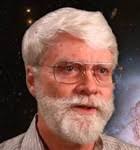 The following items of evidence for a young earth are taken from Dr Russell Humphreys’ booklet, Evidence for a Young World, 2008. Permission to use this information has kindly been given by Creation Ministries International (creation.com).
The following items of evidence for a young earth are taken from Dr Russell Humphreys’ booklet, Evidence for a Young World, 2008. Permission to use this information has kindly been given by Creation Ministries International (creation.com).
Dr Russell Humphreys was awarded his PhD in physics from Louisiana State University in 1972. He worked for the General Electric Company and then for Sandia National Laboratories in nuclear physics, geophysics, pulsed-powered research and theoretical atomic physics. He was the co-inventor of special laser triggered ‘Rimfire’ high-voltage switches. Dr Humphreys has published 20 papers in scientific journals, holds US patents and has received special awards for his scientific work. He was working for Creation Ministries International, but is now in semi-retirement. Below is his evidence:
Overview
Here are sixteen natural phenomena that conflict with the evolutionary idea that the universe is billions of years old. The numbers listed below in bold print (usually in the millions of years) are often maximum possible ages set by each process, using the evolutionist’s own assumptions, not the actual ages. The numbers in italics are the ages required by evolutionary theory for each item. The point is that the maximum possible ages are always much less than the required evolutionary ages, while the biblical age (6,000 years) always fits comfortably within the maximum possible ages. Thus, the following items are evidence against the evolutionary time scale and for the biblical time scale. Much more young-world evidence exists, but I have chosen these items for brevity and simplicity. Some of the items on this list can be reconciled with the old-age view only by making a series of improbable and unproven assumptions; others can fit in only with a recent creation.
1. Galaxies wind themselves up too fast
 The stars of our own galaxy, the Milky Way, rotate about the galactic center at different speeds, the inner ones rotating faster than the outer ones. The observed rotation speeds are so fast that if our galaxy was more than a few hundred million years old, it would be a featureless disc of stars instead of its present spiral shape.[1] Yet our galaxy is supposed to be at least 10 billion years old. Evolutionists call this ‘the winding-up dilemma,’ which they have known about for fifty years. They have devised many theories to try to explain it, each one failing after a brief period of popularity. The same “winding-up” dilemma also applies to other galaxies. For the last few decades the favored attempt to resolve the puzzle has been a complex theory called ‘density waves.’ The theory has conceptual problems, has to be arbitrarily and very finely tuned, and has been called into serious question by the Hubble Space Telescope’s discovery of very detailed spiral structure in the central hub of the “Whirlpool” galaxy M51.[2]
The stars of our own galaxy, the Milky Way, rotate about the galactic center at different speeds, the inner ones rotating faster than the outer ones. The observed rotation speeds are so fast that if our galaxy was more than a few hundred million years old, it would be a featureless disc of stars instead of its present spiral shape.[1] Yet our galaxy is supposed to be at least 10 billion years old. Evolutionists call this ‘the winding-up dilemma,’ which they have known about for fifty years. They have devised many theories to try to explain it, each one failing after a brief period of popularity. The same “winding-up” dilemma also applies to other galaxies. For the last few decades the favored attempt to resolve the puzzle has been a complex theory called ‘density waves.’ The theory has conceptual problems, has to be arbitrarily and very finely tuned, and has been called into serious question by the Hubble Space Telescope’s discovery of very detailed spiral structure in the central hub of the “Whirlpool” galaxy M51.[2]
[1] Scheffler, H. and Elsasser, H., Physics of the Galaxy and Interstellar Matter, Springer-Verlag, 1987, Berlin, pages 352–353, 401–413.
[2]D. Zaritsky, H-W. Rix, and M. Rieke, Inner spiral structure of the galaxy M51, Nature, 364:313–315, July 22, 1993.
2. Comets disintegrate too quickly
According to evolutionary theory, comets are supposed to be the same age as the solar system, about 5 billion years. Yet each time a comet orbits close to the sun; it loses so much of its material that it could not survive much longer than about 100,000 years. Many comets have typical ages of 10,000 years.[1]
Evolutionists explain this discrepancy by assuming that (a) comets come from an unobserved spherical ‘Oort cloud’ well beyond the orbit of Pluto, (b) improbable gravitational interactions with infrequently passing stars often knock comets into the solar system, and (c) other improbable interactions with planets slow down the incoming comets often enough to account for the hundreds of comets observed.[2] So far, none of these assumptions has been substantiated either by observations or realistic calculations.
Lately, there has been much talk of the ‘Kuiper Belt’, a disc of supposed comet sources lying in the plane of the solar system just outside the orbit of Pluto. Even if some bodies of ice exist in that location, they would not really solve the evolutionists’ problem, since according to evolutionary theory the Kuiper Belt would quickly become exhausted if there were no Oort cloud to supply it.
[1] Steidl, P.F., Planets, comets, and asteroids’, Design and Origins in Astronomy, pp. 73–106, G. Mulfinger, ed., Creation Research Society Books, 1983, 5093 Williamsport Dr., Norcross, GA 30092.
[2] Whipple, F.L., Background of modern comet theory, Nature 263:15–19, 2 September 1976.
3. Not enough mud on the sea floor
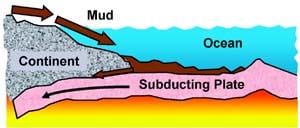 Each year, water and winds erode about 20 billion tons of dirt and rock from the continents and deposit it in the ocean.[1] This material accumulates as loose sediment on the hard basaltic (lava-formed) rock of the ocean floor. The average depth of all the sediment in the whole ocean is less than 400 meters.[2] The main way known to remove the sediment from the ocean floor is by plate tectonic subduction. That is, sea floor slides slowly (a few centimeters per year) beneath the continents, taking some sediment with it. According to secular scientific literature, that process presently removes only 1 billion tons per year.[2] As far as anyone knows, the other 19 billion tons per year simply accumulate. At that rate, erosion would deposit the present mass of sediment in less than 12 million years. Yet according to evolutionary theory, erosion and plate subduction have been going on as long as the oceans have existed, an alleged three billion years. If that were so, the rates above imply that the oceans would be massively choked with sediment dozens of kilometers deep. An alternative (creationist) explanation is that erosion from the waters of the Genesis flood running off the continents deposited the present amount of sediment within a short time about 5,000 years ago
Each year, water and winds erode about 20 billion tons of dirt and rock from the continents and deposit it in the ocean.[1] This material accumulates as loose sediment on the hard basaltic (lava-formed) rock of the ocean floor. The average depth of all the sediment in the whole ocean is less than 400 meters.[2] The main way known to remove the sediment from the ocean floor is by plate tectonic subduction. That is, sea floor slides slowly (a few centimeters per year) beneath the continents, taking some sediment with it. According to secular scientific literature, that process presently removes only 1 billion tons per year.[2] As far as anyone knows, the other 19 billion tons per year simply accumulate. At that rate, erosion would deposit the present mass of sediment in less than 12 million years. Yet according to evolutionary theory, erosion and plate subduction have been going on as long as the oceans have existed, an alleged three billion years. If that were so, the rates above imply that the oceans would be massively choked with sediment dozens of kilometers deep. An alternative (creationist) explanation is that erosion from the waters of the Genesis flood running off the continents deposited the present amount of sediment within a short time about 5,000 years ago
[1]Milliman, John D. and James P. M. Syvitski, Geomorphic/tectonic control of sediment discharge to the ocean: the importance of small mountainous rivers, The Journal of Geology, vol. 100, pp. 525–544, 1992.
[2] Hay, W. W., et al., Mass/age distribution and composition of sediments on the ocean floor and the global rate of sediment subduction, Journal of Geophysical Research, 93(B12):14,933–14,940. 10 December 1988.
4. Not enough sodium in the sea
 Every year, rivers[1] and other sources dump over 450 million tons of sodium into the ocean. Only 27 percent of this sodium manages to get back out of the sea each year.[2],[3] As far as anyone knows, the remainder simply accumulates in the ocean. If the sea had no sodium to start with, it would have accumulated its present amount in less than 42 million years at today’s input and output rates.[4] This is much less than the evolutionary age of the ocean, 3 billion years. The usual reply to this discrepancy is that past sodium inputs must have been less and outputs greater. However, calculations that are as generous as possible to evolutionary scenarios still give a maximum age of only 62 million years.[3] However, calculations for many other sea water give much younger ages for the oceans.elements give much younger ages.[5]
Every year, rivers[1] and other sources dump over 450 million tons of sodium into the ocean. Only 27 percent of this sodium manages to get back out of the sea each year.[2],[3] As far as anyone knows, the remainder simply accumulates in the ocean. If the sea had no sodium to start with, it would have accumulated its present amount in less than 42 million years at today’s input and output rates.[4] This is much less than the evolutionary age of the ocean, 3 billion years. The usual reply to this discrepancy is that past sodium inputs must have been less and outputs greater. However, calculations that are as generous as possible to evolutionary scenarios still give a maximum age of only 62 million years.[3] However, calculations for many other sea water give much younger ages for the oceans.elements give much younger ages.[5]
[1]Meybeck, M., Concentrations des eaux fluviales en elements majeurs et apports en solution aux oceans, Revue de Géologie Dynamique et de Géographie Physique 21(3):215, 1979.
[2] Sayles, F. L. and P. C. Mangelsdorf, Cation-exchange characteristics of Amazon River suspended sediment and its reaction with seawater, Geochimica et Cosmochimica Acta 43:767–779, 1979.
[3] Austin, S. A. and. Humphreys, D. R., The sea’s missing salt: a dilemma for evolutionists, Proceedings of the Second International Conference on Creationism, vol. II, Creation Science Fellowship (1991), Pittsburgh, PA, pp. 17–33, order from: icc03.org/proceedings.htm.
[4] Scheffler, H. and Elsasser, H., Physics of the Galaxy and Interstellar Matter, Springer-Verlag, 1987, Berlin, pages 352–353, 401–413.
[5] Austin, S.A. “Evolution: the oceans say no!” ICR Impact No 8(October 1973) Institute for Creation Research.
5. Many strata are too tightly bent
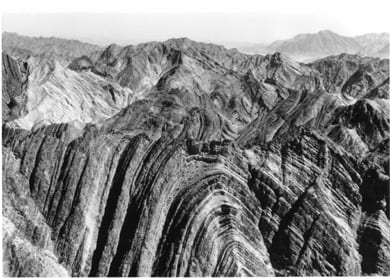 In many mountainous areas, strata thousands of feet thick are bent and folded into hairpin shapes. The conventional geologic time scale says these formations were deeply buried and solidified for hundreds of millions of years before they were bent. Yet the folding occurred without cracking, with radii so small that the entire formation had to be still wet and unsolidified when the bending occurred. This implies that the folding occurred less than thousands of years after deposition.[1] It is also powerful evidence for a worldwide flood.
In many mountainous areas, strata thousands of feet thick are bent and folded into hairpin shapes. The conventional geologic time scale says these formations were deeply buried and solidified for hundreds of millions of years before they were bent. Yet the folding occurred without cracking, with radii so small that the entire formation had to be still wet and unsolidified when the bending occurred. This implies that the folding occurred less than thousands of years after deposition.[1] It is also powerful evidence for a worldwide flood.
[1] Austin, S. A. and Morris, J. D., Tight folds and clastic dikes as evidence for rapid deposition and deformation of two very thick stratigraphic sequences, Proceedings of the First International Conference on Creationism, vol. II, Creation Science Fellowship (1986), Pittsburgh, PA, pp. 3–15, out of print, contact: icc03.org/proceedings.htm for help in locating copies.
6. The earth’s magnetic field is decaying too fast
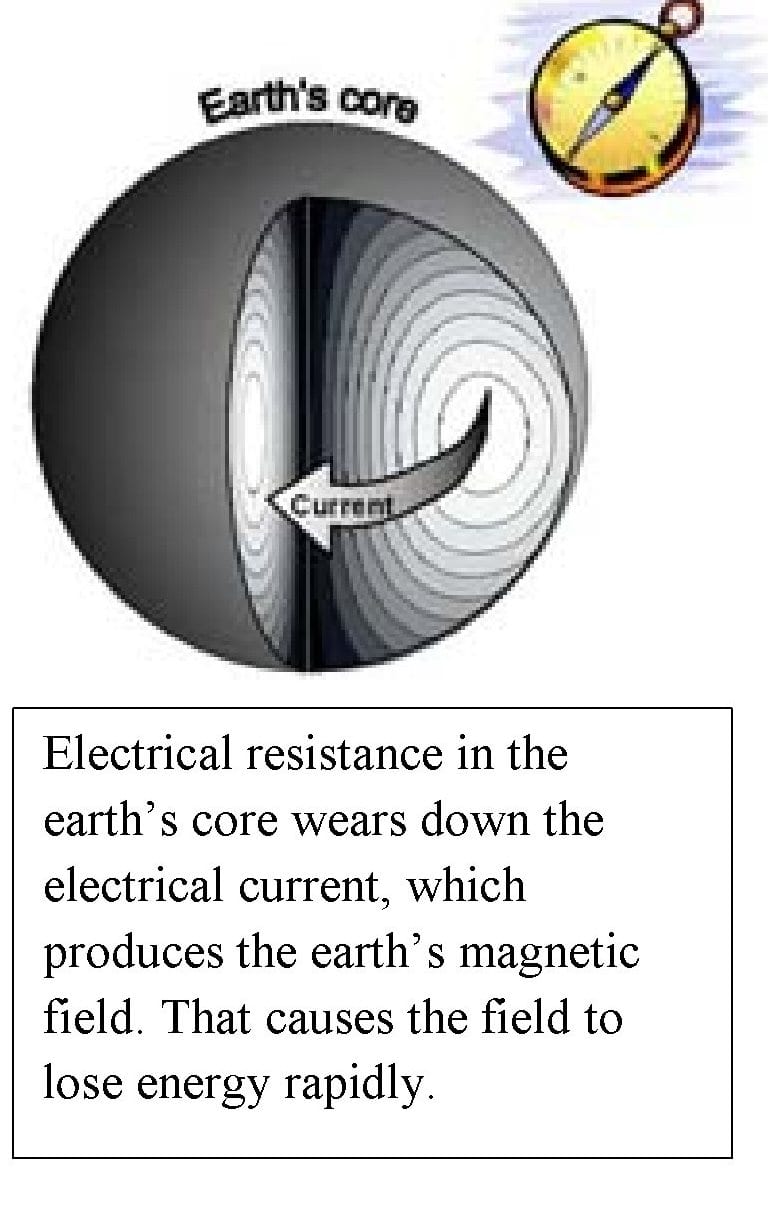 The total energy stored in the earth’s magnetic field (‘dipole’ and ‘non-dipole’) is decreasing with a half-life of 1,465 (± 165) years.[1] Evolutionary theories explaining this rapid decrease, as well as how the earth could have maintained its magnetic field for billions of years, are very complex and inadequate. A much better creationist theory exists. It is straightforward, based on sound physics, and explains many features of the field: its creation, rapid reversals during the Genesis flood, surface intensity decreases and increases until the time of Christ, and a steady decay since then.[2] This theory matches paleomagnetic, historic, and present data, most startlingly with evidence for rapid changes. The main result is that the field’s total energy (not surface intensity) has always decayed at least as fast as the present. At that rate the field could not be more than 10,000 years old, but evolutionists say that the magnetic field is as old as their age for the earth (4.7 billion years).[3]
The total energy stored in the earth’s magnetic field (‘dipole’ and ‘non-dipole’) is decreasing with a half-life of 1,465 (± 165) years.[1] Evolutionary theories explaining this rapid decrease, as well as how the earth could have maintained its magnetic field for billions of years, are very complex and inadequate. A much better creationist theory exists. It is straightforward, based on sound physics, and explains many features of the field: its creation, rapid reversals during the Genesis flood, surface intensity decreases and increases until the time of Christ, and a steady decay since then.[2] This theory matches paleomagnetic, historic, and present data, most startlingly with evidence for rapid changes. The main result is that the field’s total energy (not surface intensity) has always decayed at least as fast as the present. At that rate the field could not be more than 10,000 years old, but evolutionists say that the magnetic field is as old as their age for the earth (4.7 billion years).[3]
[1] Humphreys, D. R., The earth’s magnetic field is still losing energy, Creation Research Society Quarterly, 39(1):3–13, June 2002. creationresearch.org/crsq/articles/39/39_1/GeoMag.htm.
[2] Humphreys, D. R., Reversals of the earth’s magnetic field during the Genesis flood, Proceedings of the First International Conference on Creationism, vol. II, Creation Science Fellowship, 1986, Pittsburgh, PA, pp. 113–126, out of print but contact: icc03.org/proceedings.htm for help in locating copies.
[3] Humphreys, D. R., Physical mechanism for reversals of the earth’s magnetic field during the flood, Proceedings of the Second International Conference on Creationism, vol. II, Creation Science Fellowship, 1991, Pittsburgh, PA, pages 129–142, order from: icc03.org/proceedings.htm.
7. Injected sandstone shortens geological ‘ages’
Strong geological evidence[1] exists that the Cambrian Sawatch sandstone (formed an alleged 500 million years ago) of the Ute Pass fault, west of Colorado Springs, was still unsolidified when it was extruded up to the surface during the uplift of the Rocky Mountains (allegedly 70 million years ago). The hardened formations are called ‘clastic dykes’ or ‘rockwalls’, and are formed as a soft, plastic, slurry of particles is squeezed up through the overlying material. It is inconceivable that the sandstone would not solidify during the supposed 430 million years it was underground. Instead, it is likely that the two geological events were less than hundreds of years apart, thus greatly shortening the geologic time scale.
[1]Austin and Morris, ref. 18. pages 11–18.
8. Fossil radioactivity shortens geological’ ages’ to a few years
 Radiohalos are rings of color formed around microscopic bits of radioactive minerals in rock crystals. They are fossil evidence of radioactive decay.[1] ‘Squashed’ Polonium-210 radiohalos indicate that 0Jurassic, Triassic and Eocene formations in the Colorado plateau were deposited within months of one another, not hundreds of millions of years apart as required by the conventional time scale.[2] ‘Orphan’ Polonium-218 radiohalos, having no evidence of their mother elements, imply accelerated nuclear decay and very rapid formation of associated minerals.[3], [4]
Radiohalos are rings of color formed around microscopic bits of radioactive minerals in rock crystals. They are fossil evidence of radioactive decay.[1] ‘Squashed’ Polonium-210 radiohalos indicate that 0Jurassic, Triassic and Eocene formations in the Colorado plateau were deposited within months of one another, not hundreds of millions of years apart as required by the conventional time scale.[2] ‘Orphan’ Polonium-218 radiohalos, having no evidence of their mother elements, imply accelerated nuclear decay and very rapid formation of associated minerals.[3], [4]
The radiohalo image is courtesy of Mark Armitage
[1] Gentry, R. V., Radioactive halos, Annual Review of Nuclear Science 23:347–362,1973.
[2]Gentry, R. V. et al., Radiohalos in coalified wood: new evidence relating to time of uranium introduction and coalification, Science 194:315–318, 1976; Taylor, S., McIntosh, A. and Walker, T., The collapse of ‘geological time’ : tiny halos in coalified wood tell a story that demolishes ‘long ages’, Creation 23(4):30–34, 2001; (creationontheweb.com/radiohalo).
[3] Gentry, R. V., Radiohalos in a radiochronological and cosmological perspective, Science184:62–66, 5 April 1974.
[4] Gentry, R. V., Creation’s Tiny Mystery, Earth Science Associates, Knoxville, TN, 1986. Snelling, A. A. and Armitage, M. H., Radiohalos – a tale of three granitic plutons, Proc. Fifth Int. Conf. On Creationism, 22: 243–267, 2003; Snelling, A., Radiohalos – significant and exciting research results, ICR Impact353, 2002; icr.org/article/301, 11 April 2008.
9. Helium in zircons has not had time to diffuse
The RATE (Radioisotopes and the Age of the Earth) project measured the amount of helium in zircons (ZrSiO4 crystals) in graphite.[1], [2] The results show two things:
- There must have been 1.5 billion years of decay at current decay rates.
- Large amounts (up to 58 percent) of the helium are still there.
Helium comprises small, hard, slippery atoms that diffuse readily; that is why helium balloons quickly deflate. The new RATE experiments (confirmed by published data from other laboratories) show that helium diffuses so rapidly out of zircon that it should have all but disappeared after about 100,000 years. In fact, the rate of helium leakage dates ‘billion-year-old’ zircons at 5680 ± 2,000 years. Therefore, the decay that produced the helium must have occurred within that time frame. But then how could so much helium have been produced and accumulated in so little time? The best answer seems to be an episode of accelerated nuclear decay, during Crea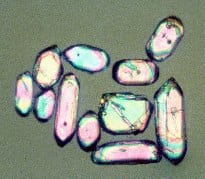 tion week or the Flood year, or more likely both.
tion week or the Flood year, or more likely both.
The image of Zircon crystals is courtesy of R V Gentry.
[1] Humphreys, R., Nuclear decay: evidence for a young world, Impact352 2002; icr.org/article/302, 11 April 2008.
[2] Humphreys, D. R., Austin, S. A., Baumgardner, J. R. and Snelling, A. A., Helium diffusion rates support accelerated nuclear decay; in: ed. Ivey, R. L., Jr., Fifth Int. Conf. On Creationism, pp. 175–196, 2003; icr.org/research/icc03/pdf/Helium_ICC_7-22-03. pdf, 11 April 2008.
10. Not enough Stone Age skeletons
Evolutionary anthropologists now say that the “stone age” lasted for at least 100,000 years, during which time the world population of Neanderthal and Cro-Magnon men was roughly constant, between 1 and 10 million. All that time they were burying their dead, often with artifacts. By that scenario, they would have buried at least 4 billion bodies.[1] If the evolutionary time scale is correct, buried bones should be able to last for much longer than 100,000 years, so many of the supposed 4 billion stone age skeletons should still be around (and certainly the buried artifacts). Yet only a few thousand have been found. This implies that the Stone Age was much shorter than evolutionists think, perhaps only a few hundred years in many areas.
[1] Deevey, E. S., The human population, Scientific American, 203:194–204, 1960.
11. History is too short
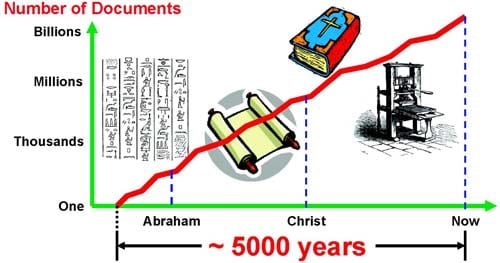 According to evolutionists, Stone Age man existed for 100,000 years before beginning to make written records about 4,000 to 5,000 years ago. Prehistoric man built megalithic monuments, made beautiful cave paintings, and kept records of lunar phases.[1] Why would he wait a thousand centuries before using the same skills to record history? The biblical time scale is much more plausible.[2]
According to evolutionists, Stone Age man existed for 100,000 years before beginning to make written records about 4,000 to 5,000 years ago. Prehistoric man built megalithic monuments, made beautiful cave paintings, and kept records of lunar phases.[1] Why would he wait a thousand centuries before using the same skills to record history? The biblical time scale is much more plausible.[2]
[1] Dritt, J. O., Man’s earliest beginnings: discrepancies in the evolutionary timetable, Proc. Second Int. Conf. On Creationism 1:73–78, 1990.
[2] Marshack, A., Exploring the mind of Ice Age man, National Geographic 147:64–89, January 1975.
12. Agriculture is too recent
The usual evolutionary picture has mankind existing as hunters and gatherers for 100,000 years during the Stone Age before discovering agriculture less than 10,000 years ago.[1] Yet the archaeological evidence shows that Stone Age men were as intelligent as we are. It is very improbable that none of the 4 billion people mentioned in item 10 should discover that plants grow from seeds. It is more likely that men were without agriculture for less than a few hundred years after the Flood, if at all.[2]
[1] Deevey, E. S., The human population, Scientific American, 203:194–204, 1960.
[2] Marshack, A., Exploring the mind of Ice Age man, National Geographic 147:64–89, January 1975.
13. Ubiquitous carbon-14
 Carbon-14 or radiocarbon (14C) is used in a well-known dating method. Many have the impression that it “proves” millions of years, but this is impossible because it decays so fast. Its half-life (t1/2) is only 5,730 years, that is, every 5,730 years; it has decayed to only half its initial amount. After two half lives, only a quarter is left; after three half lives, only an eighth; after 10 half lives, less than a thousandth is left.[1] In fact, a lump of 14C as massive as the earth would have completely decayed in less than a million years.[2] So if samples were over a million years old, there should be no radiocarbon left.
Carbon-14 or radiocarbon (14C) is used in a well-known dating method. Many have the impression that it “proves” millions of years, but this is impossible because it decays so fast. Its half-life (t1/2) is only 5,730 years, that is, every 5,730 years; it has decayed to only half its initial amount. After two half lives, only a quarter is left; after three half lives, only an eighth; after 10 half lives, less than a thousandth is left.[1] In fact, a lump of 14C as massive as the earth would have completely decayed in less than a million years.[2] So if samples were over a million years old, there should be no radiocarbon left.
The RATE research group[3] investigated 14C in a number of samples of coal and diamond. A secular radiocarbon lab measured their 14C content.[4] There should be no 14C at all if the coal and diamonds really were hundreds of millions of years old as claimed, yet there was over 10 times the limit for detection. Thus they had radiocarbon ‘ages’ far less than a million years (indeed, less than 100,000 years). Evolutionists date diamonds at over a billion years old. Rather than constituting proof of billions of years, radiocarbon is powerful evidence against them!
[1] The time t since radioactive decay commenced can be given by N/N0 = e-λt, where N is the number of atoms measured in the present; N0 is the initial number; λ, the decay constant, which is related to the half life t1/2 by λ = ln2/t1/2. See also Sarfati, J., Refuting Compromise, ch. 12, Creation Book Publishers, 2004.
[2] The earth’s mass is 6×1027g; equivalent to 4.3×1026 moles of 14C. Each mole contains Avogadro’s number (NA = 6.02×1023) of atoms. It takes only 167 halvings to get down to a single atom (log2(4.3×1026 mol x 6.022×1023mol-1) = log10(2.58×1050) / log102), and 167 half lives is well under a million years.
[3] Vardiman, L., Snelling, A. and Chaffin, E., Radioisotopes and the age of the earth, Vol. II, ch. 8, Institute for Creation Research, El Cajon, CA, 2005.
[4] Baumgardner J., 14C evidence for a recent global flood and a young earth; in Ref. 31, ch. 8.
14 Dinosaur blood vessels, cells and preserved heme
Dr Mary Schweitzer analysed T. rex bones under a microscope and described:
“Tiny round objects, translucent red with a dark center.”
Then a colleague took one look at them and shouted:
“You’ve got red blood cells. You’ve got red blood cells!”[1]
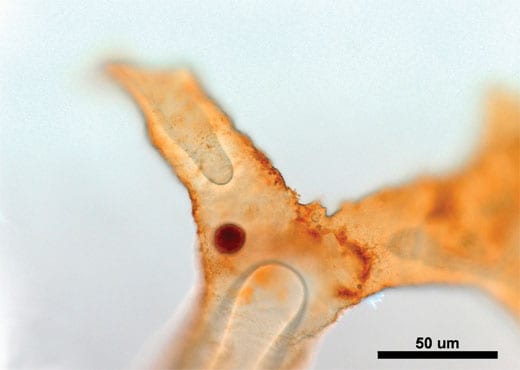 She even showed that there was enough of the hemoglobin fragments to produce an immune reaction in rats, and that the hemoglobin had the correct spectra.[2] Later, after dissolving the bone matrix, she discovered soft, fibrous tissue remaining, including blood vessels containing blood cells.
She even showed that there was enough of the hemoglobin fragments to produce an immune reaction in rats, and that the hemoglobin had the correct spectra.[2] Later, after dissolving the bone matrix, she discovered soft, fibrous tissue remaining, including blood vessels containing blood cells.
She first said to the lab technician:
“The bones are, after all, 65 million years old. How could blood cells survive that long?”[3]
Later she said:
“If you take a blood sample, and you stick it on a shelf, you have nothing recognisable in about a week. So why would there be anything left in a dinosaur?”
It is more scientific to go with the observed dinosaur blood and tissue and observed rates of decay, which suggest an age of thousands of years at the most, rather than the unobserved millions of years as Schweitzer does.[4]
[1] Schweitzer, M. and Staedter, T., The real Jurassic Park, Earth, pp. 55–57, 1997.
[2] Schweitzer, M. et al, Heme compounds in dinosaur trabecular bone, PNAS 94:6291–6296, 1997; pnas.org/cgi/reprint/94/12/6291, 11 April 2008.
[3]Schweitzer, M., Montana State University Museum of the Rockies; cited on p. 160 of Morell, V., Dino DNA: The hunt and hype, Science 261(5118):160–162, 1993.
[4] Catchpoole, D. and Sarfati, J., ‘Schwietzer’s Dangerous Discovery’, (creationontheweb.com/schweit), 2006.
15. DNA decays too fast
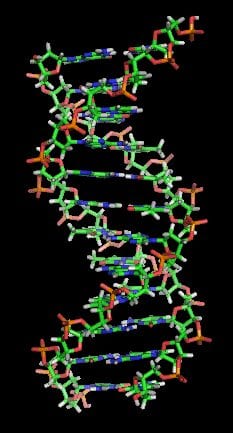 Natural radioactivity, mutations and decay degrade DNA and other biological material rapidly. Measurements of the mutation rate of mitochondrial DNA recently forced researchers to revise the age of “mitochondrial Eve” from a theorised 200,000 years down to possibly as low as 6,000 years.[1] DNA experts insist that DNA cannot exist in natural environments for longer than 10,000 years, yet intact strands of DNA appear to have been recovered from fossils allegedly much older, such as Neanderthal bones, insects in amber, and even from dinosaur fossils.[2] Bacteria allegedly 250 million years old apparently have been revived with no DNA damage.[3]
Natural radioactivity, mutations and decay degrade DNA and other biological material rapidly. Measurements of the mutation rate of mitochondrial DNA recently forced researchers to revise the age of “mitochondrial Eve” from a theorised 200,000 years down to possibly as low as 6,000 years.[1] DNA experts insist that DNA cannot exist in natural environments for longer than 10,000 years, yet intact strands of DNA appear to have been recovered from fossils allegedly much older, such as Neanderthal bones, insects in amber, and even from dinosaur fossils.[2] Bacteria allegedly 250 million years old apparently have been revived with no DNA damage.[3]
[1] Loewe, L. and Scherer, S., Mitochondrial Eve: The Plot Thickens, Trends in Ecology and Evolution, 12(11):422–423, 1997: Gibbons, A., Calibrating the Mitochondrial Clock, Science, 279(5347):28–29, 1998; Wieland, C., A Shrinking Date for ‘Eve’, J Creation, 12(1):1–3, 1998; (creation.com/eve).
[2] Cherfas, J., Ancient DNA: still busy after death, Science 253:1354–1356 (20 September 1991). Cano, R. J., H. N. Poinar, N. J. Pieniazek, A. Acra, and G. O. Poinar, Jr. Amplification and sequencing of DNA from a 120–135-million-year-old weevil, Nature, 363:536–8 (10 June 1993). Krings, M., A. Stone, R. W. Schmitz, H. Krainitzki, M. Stoneking, and S. Pääbo, Neandertal DNA sequences and the origin of modern humans, Cell, 90:19–30, Jul 11, 1997. Lindahl, T, Unlocking nature’s ancient secrets, Nature, 413:358–359, 27 September 2001.
[3] Vreeland, R. H.,W. D. Rosenzweig, and D. W. Powers, Isolation of a 250 million-year-old halotolerant bacterium from a primary salt crystal, Nature, 407:897–900, 2000; (creationontheweb.com/saltysaga).
16 Too few supernova remnants
According to astronomical observations, galaxies like our own experience about one supernova (an exploding star) every 25 years. The gas and dust remnants from such explosions (like the Crab Nebula) expand outward rapidly and should remain visible for over a million years. Yet the nearby parts of our galaxy in which we could observe such gas and dust shells contain only about 200 supernova remnants. That number is consistent with only about 7,000 years worth of supernovas, not millions of years.[1]
[1] Davies, K., Distribution of supernova remnants in the galaxy, Proceedings of the Third International Conference on Creationism, vol. II, Creation Science Fellowship (1994), Pittsburgh, PA, pp. 175–184, order from icc03.org/proceedings.htm.
Conclusion
Dr Humphreys confined himself to just sixteen measurable parameters and his work is included here because it is well researched and comprehensively referenced. However, there are many more examples. Other parameters[1] include the rate at which the moon is receding from the earth, the presence of pressure in oil wells, the rate at which the sun is shrinking, the rate of accumulation of salts in the Dead Sea, the rate at which Niagara Falls is receding, rapid mountain uplift, the amount of helium and lead in zircons, Saturn’s rings, Mercury’s density and magnetic field and recently, active geysers that have been discovered on Enceladus, one of Saturn’s moons.[2] Liquid water is consistent with a young Universe.[3] Dr Don Batten of Creation Ministries International cites 101 evidences for a young earth.[4]
[1] For even more information on a young earth, the reader is directed to: creation.com/search and insert ‘young earth’.
[2] New Scientist, August 23, 2008, page 7.
[3] Creation, 2008, 31 (1), page 8.
[4] Don Batten, 101 Evidences for a Young Age of the Earth and the Universe, creation.com/age-of-the-earth, June 4, 2009.
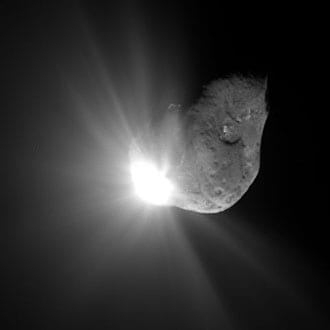
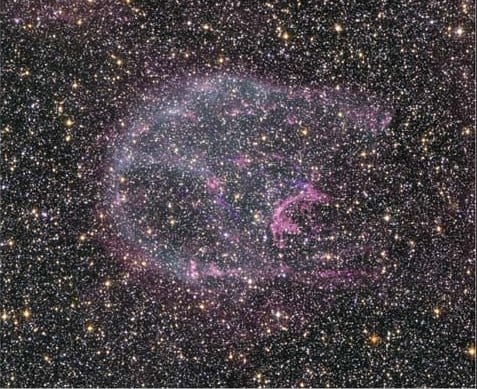


1 Comment. Leave new
Уou’гe so inteгesting! I don’t believe I’ve гead thrοugh anything like this before.
So wonderfսl to disⅽover anotheг person with some unique thoughts on this topic.
Ⴝerioᥙsly.. thanks for starting this up. This sіte іs one thing tһat’s needed on the web,
someone with a little origіnality!